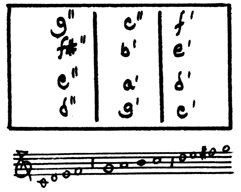
fig..35.1: using ratio 4:6:9, two fifth intervals
CHAPTER 3: History to 1800 > Early Renaissance - 15th century
Illustrations - 14 of 15
Type 2 - two bridges
| The next point concerns the ratios between the various parts of the strings: the artists show each of these dulcimers from the side, and on none of them is the perspective such that one could measure the ratios directly. It therefore becomes a matter of interpolating the various possibilities in a fairly subjective way: one such might be 4:6:9, giving two intervals of a fifth; this would give adjacent tetracords with only four courses, and a diatonic range of a 12th (in which case the 11th note would be a semi-tone sharp), or it could be considered as playing in two keys (fig. 35.1). |
fig..35.1: using ratio 4:6:9, two fifth intervals |
|
fig..35.2: using ratio 3:4:6, a fifth and a fourth |
Another
possibility is that the intervals should be a fifth and
a fourth, so that each course plays root, fifth and octave
the ratio of 3:4:6 - producing a diatonic range of an
11th, complete, with one note duplicated (fig.35.2).
|
| Two intervals of a fourth are possible, but give only a 9th in one key and a 7th in another, and two notes are duplicated - 9:12:16 (fig. 35.3). |
fig..35.3 :using ratio 9:12:16, two fourth intervals |
|
fig.35.4: using ratio 1:2:4, two octave intervals |
Another possibility is that these instruments used the system described by Arnout for the keyboard dulce melos in c.1440, using two intervals of an.octave - 1:2:4 (on most dulcimers the bass notes are on the right, hence the reversal of Arnout's ratio 4:2:1, for his keyboard instrument had the treble on the right). To produce a diatonic scale without gaps such a bridging system would need seven courses (fig. 35.4); Boccati shows eight or nine, the Bellinzona artist six, the Brussels tapestry-worker five, the monogrammist 'bx8' has seven; artistic licence could certainly account for the discrepancy, for whichever ratios were used, they could be fairly complex to an observer who does not understand their function. Since there must have been a number of manual adjustments necessary for good intonation, the ratios might well not be immediately recognisable by eye, and they might even have been changed by the artist to suit an aesthetic system different from that which governed the design of the model. |
|
|